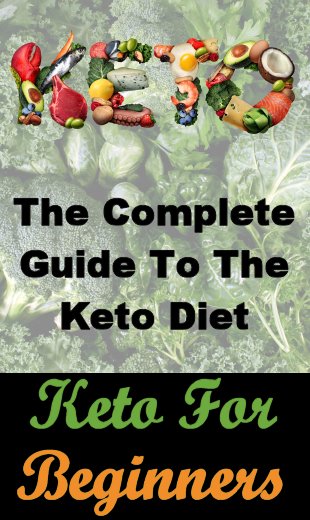5 Social Media Fitness Myths Debunked
If you spend any time on social media platforms such as Facebook or Instagram, you’ll probably have seen posts or, more likely, adverts that pop up on your news feed, by often-self-proclaimed fitness “gurus” telling you how you can have six-pack abs, or skinny thighs, or whatever new fad is all over the news.
They might even have impressive-looking photos and testimonials, maybe even from celebrities, that show you how they have been able to help others achieve their dream look.
(As an aside, you should ask yourself why you are exercising. If it’s for health reasons, then great, but if it’s because you think you ought to look a certain way, then that may not be the best motivation. You might want to look at this year’s worth of self-love affirmations to help you be less critical about your appearance.)
However, some of this information may be, at best, misleading.
So how can you distinguish between fitness myths and fitness facts?
This article explores five of the more common claims (or myths, in fact) that you may run across.
Myth #1: You Can Eat Anything You Want As Long As You Exercise
The Truth
The problem is, you might be overestimating how many calories you burn during a session at the gym.
And this might not be your fault, of course – it could be the way that some machines (e.g. cardio) assess this information, because most of them only use your weight and age, which are only some of the factors that should be taken into account. (Others include your overall fitness and your body composition.)
One study concluded that some of the more popular exercise machines (e.g. ellipticals, stair climbing, stationary bikes, treadmills) can overestimate how many calories you burn by anywhere from 7% to 42%.
So if you are relying on how many calories you think (or are told) you are burning, you might end up gaining weight, not losing it, if you believe all that exercise gives you a licence to eat all the doughnuts you want.
Helpful Tips
- Eat whole foods. Various studies have shown that eating ultra-processed foods can cause weight gain, so try to fill your plate with fruits, vegetables, whole grains, and other real food instead.
- Calculate portions. You still need to monitor how much you eat (and what type of food that is – e.g. simple carbs, complex carbs, fat, protein). As a start, try to learn how to estimate an ounce of cheese or four ounces of fish, for example.
- Increase protein. If you’re trying to gain muscle and/or lose weight, consuming slightly more protein may be helpful, because protein boosts your metabolism and makes you feel full.
Myth #2: Lifting Weights Will Make You Bulky
The Truth
While it’s unlikely that you’ll end up looking like Arnold Shwarzenegger by accident, lifting weights is still a great way to build and retain muscle mass, especially as you grow older – and provided you do it right.
Helpful Tips
- Train safely. To avoid injuries, gradually increase the amount of weight you lift, and ensure you use the correct form.
- Mix it up. Free weights are highly effective, but you may prefer some variety, so why not experiment with weight machines and exercises that use your body weight?
Myth #3: You Need To Work Out 7 Days A Week
The Truth
Excessive exercise can weaken your muscles and organs and leave you feeling
burned out, which is why most adults need at least one recovery day per week.
Helpful Tips
- Try active rest. In addition to taking a day off to relax, you may benefit from alternating between high intensity and gentler activities. For example, if you bench press on Mondays, spend your Tuesdays taking a walk instead.
- Manage stress. You need to figure out why you’re overdoing it, then talk with a friend or a counselor if you’re struggling with personal issues. (And don’t forget to check out the many articles on this site that talk about stress.)
Myth #4: You Can Spot Reduce
The Truth
You gain weight from head to toe and you lose it the same way.
So, sit-ups may tone your core – but they won’t remove fat from just your waist.
Helpful Tips
- Eat less. If you want to lose weight you’ll probably need to cut down on your calories and focus on healthy eating habits that you can stick with (i.e. think of this less as a diet and more as a lifestyle change).
- Move more. The human body has evolved to move, not sit in a chair all day, so you need to get your body moving as much as you can. Exercise will not only burn some calories, but also, as you shed fat and gain muscle, you’re likely to look thinner too.
- Buy new clothes. In the meantime, your wardrobe can help you make the most of your current figure, so look online for advice on how to dress for your specific body type.
Myth #5: Your Bathroom Scale Rules
The Truth
Your body weight is only one of many ways to measure total fitness, so you need to take a broader view.
Helpful Tips
- Measure your waist. The size of your waist says a lot about your health, and that’s because it’s closely associated with your level of body fat.
- Talk with your doctor. Maybe you’re working out for health reasons, such as coping with the symptoms of some chronic condition or other, in which case your physician can advise you on activities that would be safe and effective based on both your current state of health and your goals.
- Love your body. A healthy lifestyle can work wonders, especially if your goals are realistic for you. Strive to be a superior version of yourself instead of dwelling on reaching an arbitrary weight or looking like a model you saw on a magazine cover.
Conclusion
While myths about fitness and exercise have been around since long before the Internet became a thing, modern technology, including social media, makes it much easier and faster to spread any information around, whether it’s true or not.
Sometimes, it can even appear to be more credible – which is why you should always ask yourself the question, “Who says so?”, and do your own research, because sadly, the old adage of “follow the money” seems to be more appropriate than ever these days.
And yes, it can be difficult doing quality research these days because, if there’s one thing the coronavirus scare (which is raging as I write this article) has taught us, it’s that facts are apparently difficult to come by.
There are, of course, plenty of people and organizations claiming to be giving you the facts (e.g. cases, deaths, mortality rate, effective treatments), but since some of this information is conflicting, how do you know what to trust and what not to?
So, if you’re going to make any significant change in your life (e.g. trying to become and remain fit), then you really do need to make sure you’re following advice that is based on evidence and facts, and not on half-truths and myths.
And part of this means ensuring the advice you get is still correct, because advances are being made in all areas of science, including the human body and how it works, all of the time.
Following good advice from 40 years may have been the best available at that time, but it doesn’t mean it’s stood the test of time well.
Additional Resources
These are suggestions for those who wish to delve deeper into any of the above:







